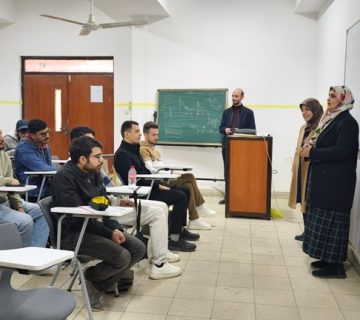“Indoor Environment Quality in the University Educational Spaces: Department of Architecture – University of Baghdad as a Case Study”
Abstract
Studies have carried out great attention to the subject of Indoor Environmental Quality (IEQ) for buildings, as it is concerned with achieving control over the indoor environment in terms of Indoor Air Quality (IAQ), temperature control, humidity, visual comfort (lighting), and acoustic comfort, taking into account the determinants of the external environment. And its factors, as well as the use of environmentally friendly materials, all of which are reflected in human health, performance and productivity.
And because the educational spaces in Iraqi universities are exposed to increasing pressures in dealing with and responding to the challenges associated with the high specificity of the hot, dry climate represented by high temperatures and the increase of dust and pollutants, and because the University of Baghdad is among the ancient universities at the level of Iraq and the Arab world as a whole, especially the Department of Architecture due to containing Its educational spaces include classrooms and studios. The need for environmentally sustainable design has become an urgent necessity that must be applied in these spaces due to what it establishes of an indoor environment that meets the requirements of thermal comfort, raising indoor air quality, and minimizing pollutants while raising thermal performance within these spaces to enhance health performance and productivity of its occupants.
From here, the general problem of the research emerged and there is a need to define the importance and role of raising environmental performance in educational spaces in university buildings on the health, performance and productivity of the occupants. The special problem was the lack of clear knowledge about finding a comprehensive strategy that works to raise the environmental performance of educational spaces in the architecture departments in Iraqi universities.
While the research problem was the existence of a lack of knowledge about the developing of a comprehensive strategy that helps to raise the quality of the indoor environments (natural ventilation and raising thermal performance) of the educational spaces (classes and studios) that can be applied in the Department of Architecture – University of Baghdad.
Then, the general objective of the research is to provide knowledge and demonstrate the importance of defining a comprehensive strategy that works to raise the quality of the indoor environments of educational spaces, especially the architecture departments in Iraqi universities.
While the special objective of the research focuses on adopting a comprehensive and applicable strategy that works to raise the quality of the indoor environments (natural ventilation and raising thermal performance) within the educational spaces (classes and studios) in the Department of Architecture – University of Baghdad.
The research lay the following basic hypothesis: The quality of the internal environment is a performance indicator used to show the environmental effectiveness of the quality of healthy living, which reflects positively on the performance and productivity of the occupants of educational spaces in university buildings.
The research is based on its approach in order to achieve its objectives, on a theoretical study supported by a practical application, where many sources related to the main concepts of the research were reviewed and discussed in three chapters, where the first chapter dealt with the concept of “Indoor Environment Quality and University Educational Spaces”, and the second chapter discussed: “Indoor Air Quality in Indoor Spaces”, while the third chapter dealt with: “Thermal Performance in University Educational Spaces” by using a measurement device, a questionnaire, and an environmental simulation program.
As a result, the research concluded that raising environmental performance can be applied to the reality of university educational spaces (especially classrooms and studios) in the hot, dry climate of Iraq, by focusing on both: natural ventilation and air filtration to improve indoor air quality, as well as reduce heating and cooling loads by employing the elements of the indoor environment, such as glazing systems and coatings, to raise the thermal performance in the university educational spaces, which reflects positively on the health, performance and productivity of the occupants.
Keywords: Indoor Environmental Quality (IEQ), Indoor Air Quality (IAQ), Thermal Performance, University Educational Spaces, Environmentally Sustainable Design.








